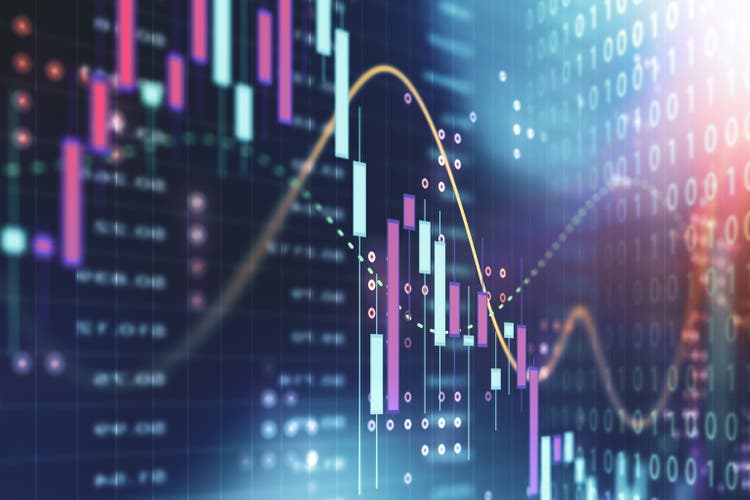This Week's 'Gotchas'

Summary
- It is key to know what, and when, is about to be tossed into the pile of data influencing the markets and our decisions.
- The Fed is the ultimate driver of the markets now. So, there is a two-pronged effect. First, reacting to the release of the data, and second, trying to surmise how that data will affect the Fed’s decisions.
- Winning “appreciation plays” will be very hard to come by this year, and “income” is a much safer answer as we proceed through 2023.
cemagraphics
The investment road is an arduous affair. It is full of twists and turns and bumps and jarring factors that are way beyond your control. The actual truth is that we are most often “reacting” to what is thrown down in front of us. Either that, or we are “betting” on what is to come. It is often key to know what, and when, is about to be tossed into the pile of data influencing the markets and our decisions.
This Week’s Gotchas
| Announcement | Date | Time |
| Factory Orders | 3/6 | 10:00 AM |
| Durable Goods | 3/6 | 10:00 AM |
| Jerome Powell’s Congressional Testimony | ||
| Consumer Credit | 3/7 | 3:00 PM |
| Jerome Powell’s Congressional Testimony (Day 2) | ||
| Jolts Job Openings | 3/8 | 10:00 AM |
| Initial Jobless Claims | 3/9 | 8.30 AM |
Any of these could move the markets, both the debt and equity markets, and perhaps in a significant manner. Each week, you should make note of what is coming to the table and include them in your investment decisions. To plow ahead without knowing what is on the table is, in my opinion, a mistake. Yet, even here, it is only part of the story.
The Fed, in my view, is the ultimate driver of the markets now. So, there is a two-pronged effect. First, reacting to the release of the data, and second, trying to surmise how that data will affect the Fed’s decisions. Make no mistake, the Fed is dictating virtually all of the markets’ performance, and what they might do is a critical part of our decision-making process now.
You also have political connotations, international complications, such as Ukraine, China and Russia, and real-life turbulence that are always staring you squarely in the face. All of these are out of your control, and all of these could rattle the markets in a surprising fashion.
In my view, winning “appreciation plays” will be very hard to come by this year. I think that “income” is a much safer answer as we proceed through 2023. One significant reason for my viewpoint is the cost of money, as the Prime Rate sits at 7.50-8.00% now, depending upon the bank. The cost for consumers to borrow money has also skyrocketed, with credit card debt exceeding 23% at many institutions and real estate mortgage rates hovering around 7.00% as opposed to their 10-year average which was 3.78%, according to data supplied by Bloomberg. The higher cost of money will also impact corporate revenues and profits, and in a negative fashion, so that metrics have to be adjusted to reflect our new and much higher borrowing costs.
The days of cheap money are now gone!
We also have a yield curve that is one of the strangest that I have seen in my 48 years on Wall Street. The height of the yield curve is the 6-month Treasury bill that closed Friday at 5.11%. This is compared to the 10-year Treasury at 3.95% and the 30-year Treasury at 3.88%. A recession of some sort is indicated here, as our higher rates do not bode well for either the bond or equity markets. We are in a:
“Watch out, take care, beware...” place now.
- Courtesy of Eric Clapton
Federal Reserve Bank of San Francisco President Mary Daly recently stated that the Fed will likely need to raise interest rates higher and maintain them at elevated levels for a longer period of time. “It’s clear there is more work to do,” Daly said in a speech Saturday at Princeton University in New Jersey. “In order to put this episode of high inflation behind us, further policy tightening, maintained for a longer time, will likely be necessary.” Daly repeated that she supports raising rates to somewhere between 5.00% and 5.50%. The higher level could be achieved by 25-basis-point hikes at each of the three following meetings. The Fed’s next meeting, another upcoming “Gotcha” event, is scheduled for March 21-22.
The difference between a good investment and an almost good investment is the difference between lightning and a lightning bug.
Never forget that!
Original Source: Author
Editor's Note: The summary bullets for this article were chosen by Seeking Alpha editors.
This article was written by
